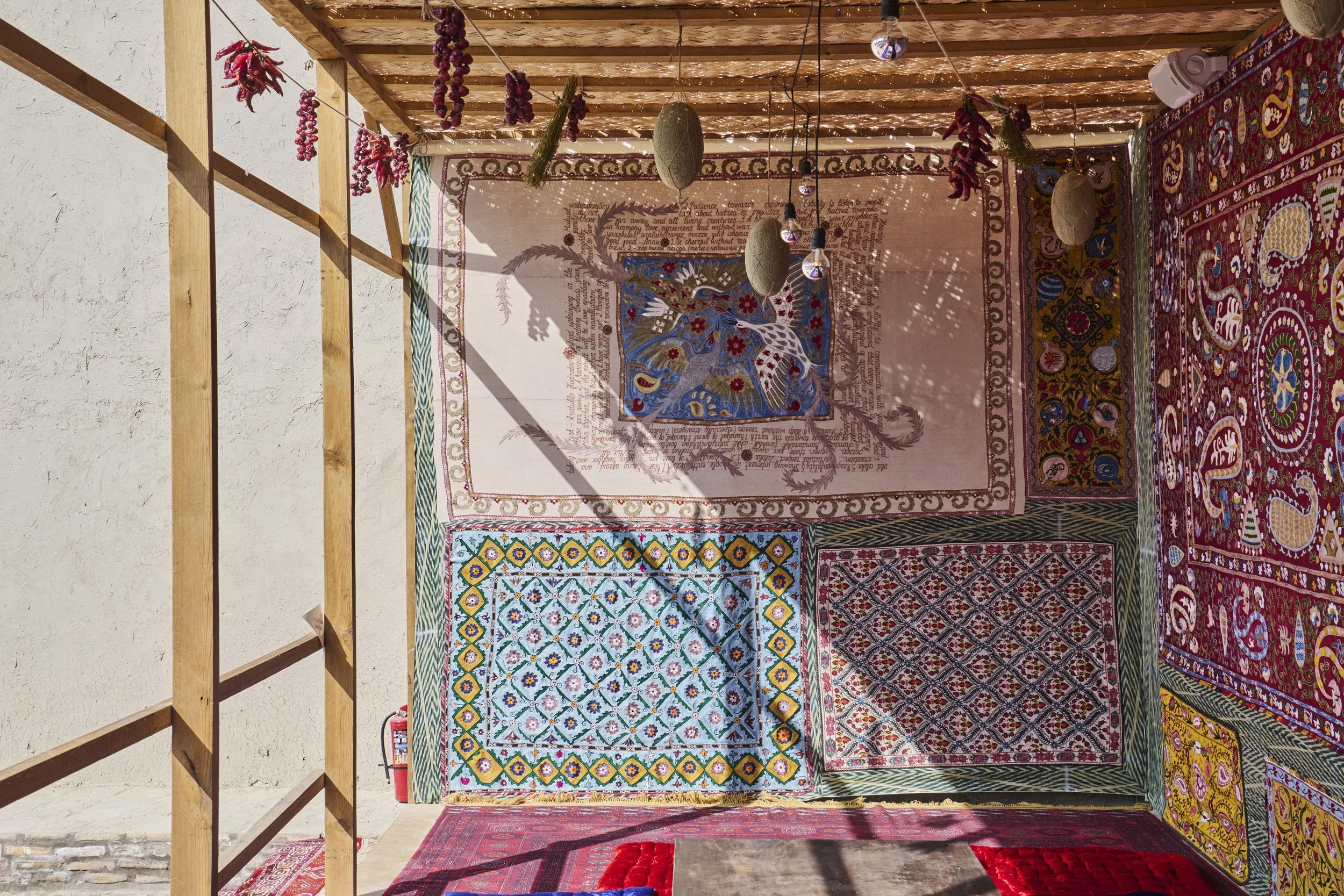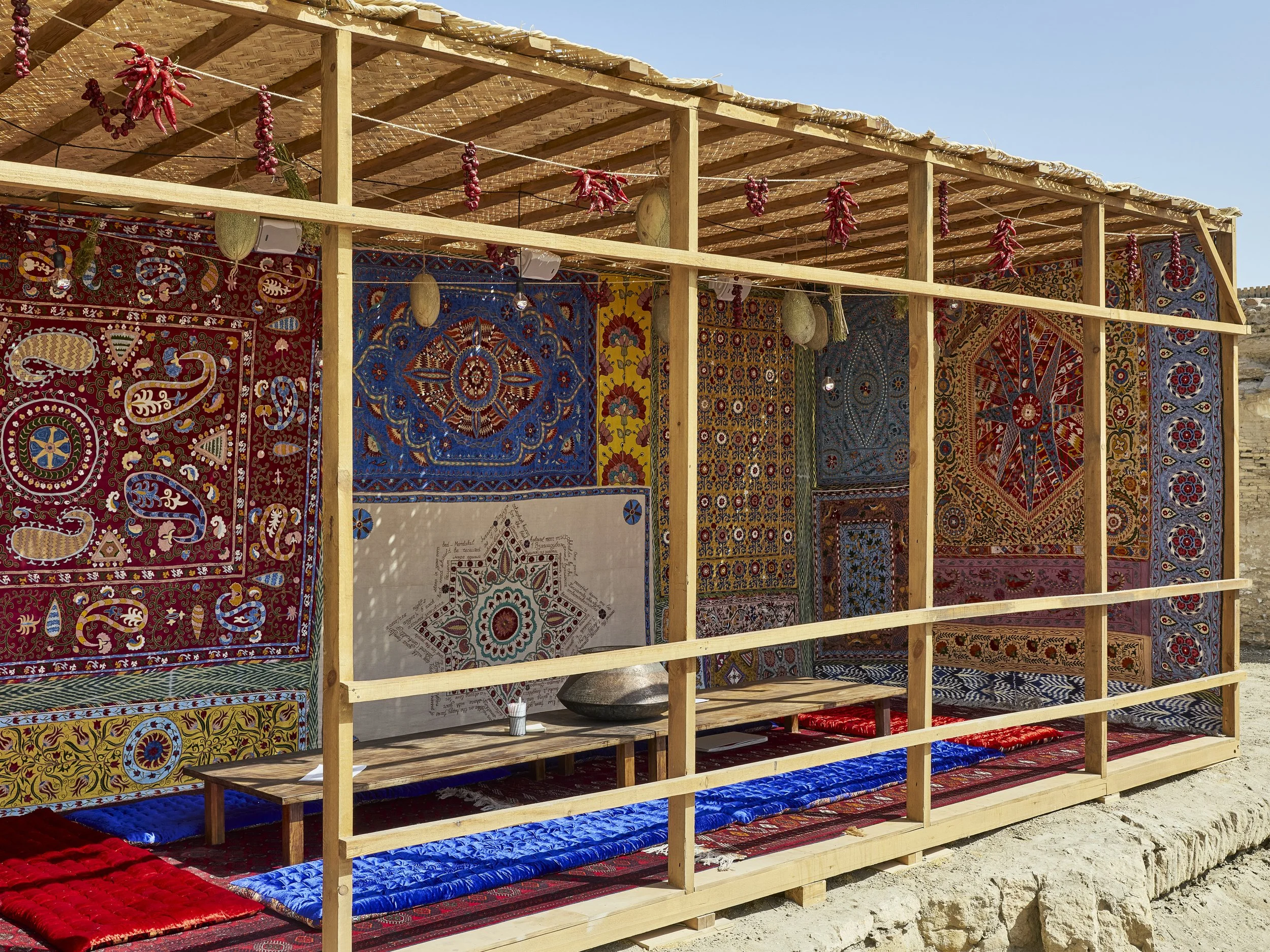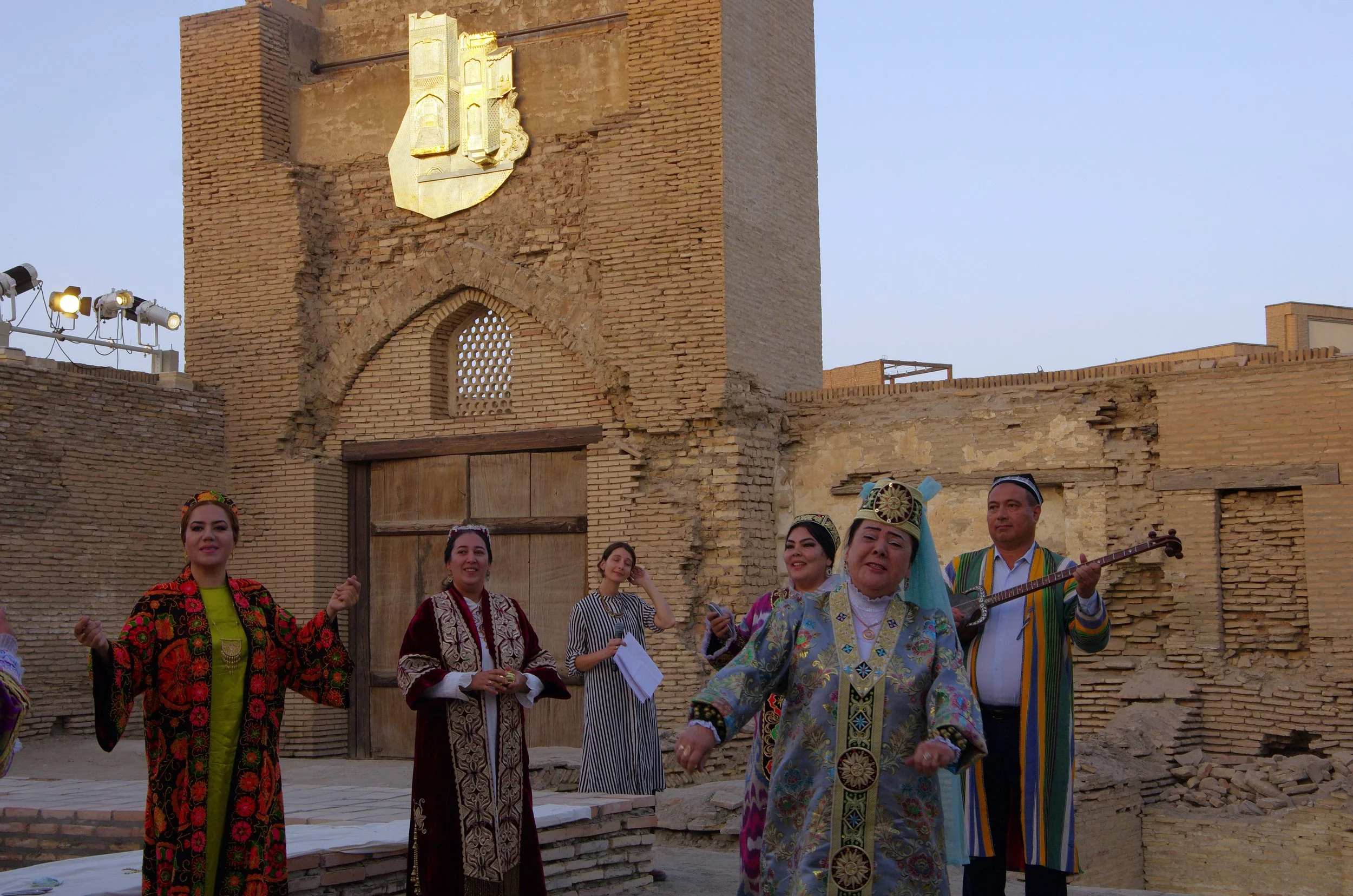“Bukhara Peace Agency” asks the audience to consider what ingredients are needed to achieve peace. Based on a previous community-based project “Bukharan Peace Recipes” conducted by Lublina, the agency uses peace recipes from the community to construct a temporary structure. Designed with custom suzanis, kurpachas, hanging fruit and herbs; the temporary structure is based on a traditional Bukharan sukkah (a temporary home built during Sukkot-- a Jewish holiday which commemorates the exodus of the Jews from Egypt and the end of the harvest). Inside the Sukkah-like tent, we are asked to write our own peace recipes and to think about shared histories between different ethnic and religious groups. The structure is accompanied by an audio story about Tufahon, a famous Jewish Sozanda (female ritual leader), and the legacy of Sozandas in Bukhara. Sozandas use song and dance that mix traditions from Islam, Zoroastrianism, and Judaism in their local rituals— embodying intercultural collaboration. The work offers a few ingredients the complicate what “peace” means in a world wrought by ethno-nationalism. The project was made in collaboration with the brilliant suzani maker Rakhmon Toshev, sound designer Samuel Hatchwell, and book designer/ collage artist gal sherizly.
September 5-November 20, 2025
Bukhara Biennial “Recipes for Broken Hearts” curated by Diana Campbell, commissioned by Gayane Umerova



